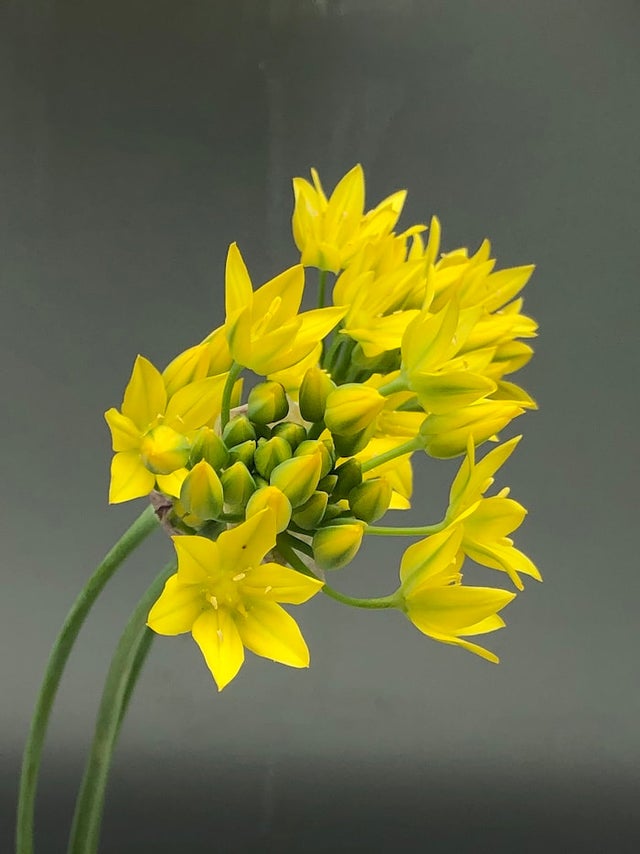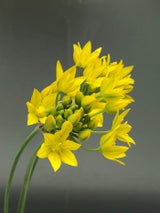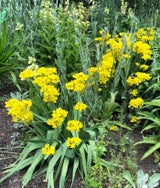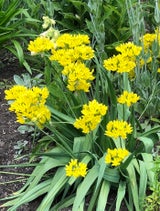- Plant IDs
- >
- ID By Type
- >
- Bulbs, Corms, Rhizomes, and Tubers
- >
- Bulbs
- >
- Alliums
- >
- Allium moly
Allium moly
Common name: Lily leek
If you saw Allium moly, would you think it was related to onions and garlic? Allium moly is a bulbous perennial native to France and Spain. It blooms in late spring and thrives in a sunny location with good drainage.
A. moly has small, star-shaped, sunny yellow flowers which appear in umbels (loose clusters) atop leafless stalks. The blue-green basal leaves are flat like tulip leaves and appear in twos. Allium moly grows up to about 25-30 centimetres (10-12 inches) high. The flowers, leaves, and bulbs of A. moly are edible, and have a mild oniony/garlicky flavour.
Allium moly was described and named by Carl Linnaeus in 1758. It is a useful plant for the border, in a rock garden, or in a cottage garden. A. moly can be found in Bed 58B of the Mediterranean Garden and 50E of the Heritage Rose Garden, as well as other areas of VanDusen.
The photos were taken in June 2022.
Text and photos by Kumi Sutcliffe



